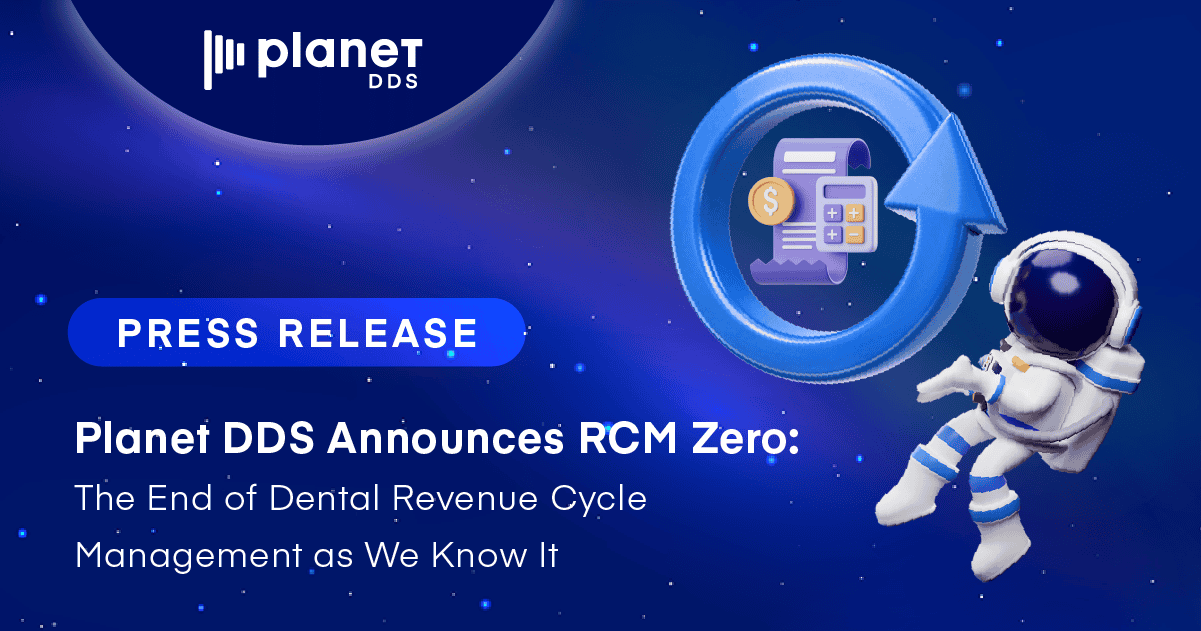How to Set SMART Dental Office Goals: Examples and Ideas
Read Cloud 9’s guide to learn how to set SMART dental office goals, examples of real-life dental office goals, and how to implement your own. ✓ Click here!

SMART goals are one of the most well-quoted and popular management tools among working professionals today. It’s attributed to the business management legend Peter Drucker in his Management by Objectives concept, then popularized by George Doran in a 1981 article.
Since then, it’s been widely adopted not just in business but in every facet of life as well. Its success is due to its simplicity and versatility. SMART goals are a crucial tool for growing dental practices and helping you hit your business goals. Let’s define SMART dental office goals, look at examples, and examine how you can start implementing this strategy in your practice today.
What Are SMART Dental Goals?
SMART is an acronym for Specific, Measurable, Achievable, Relevant, and Time-bound. Each of these adjectives describes what an ideal dental goal should be.
Specific means dentist goals should be clear and focused. That means it should include as much detail as possible. Ask yourself: What do you want to achieve? Who are the people involved in accomplishing the goal? Why is this goal relevant to you?
Measurable means you have a way to determine if you’re progressing towards your goal. Far too many dentists make vague goals without a target. For example, most people want to increase the number of patients they serve. But by how much? A good example of a measurable goal is “I want to increase the number of patients by 50%”. By adding a target, it’s much easier to actually hit that number.
Achievable means goals should be realistic and attainable. For instance, your plan might be to become the #1 dental clinic in the country. But if you’re currently an unknown clinic in a small town, that might not be realistic in a short time frame. Good dental office goals examples should challenge you, but not to the point of impossibility.
Relevant means the goal you want to achieve matters to you. It’s easy to get swayed into pursuing the goals of others, even if they will have little impact on your business. For instance, your competitor might have thousands of Facebook followers. However, if gaining a social media following is not crucial to your business strategy, it’s an empty goal to chase after.
Finally, Time-bound goals should have a clear deadline for completion. Timeframes add a sense of urgency that ensures you take action. Time-sensitive dental office goals also help you plan better because you can divide a huge task into daily practices.
SMART goals for dental office are great because they help you create realistic goals with a higher chance of completion. They’re so useful that they apply to any aspect of your dental operation. For instance, you can have individual SMART goals for dental assistant staff as well.
SMART Dental Office Goals: Examples and Ideas
To give you an idea of how to set SMART dental goals, we’ve laid out some examples of SMART goals for dental assistant staff, hygienists, and dentists, as well as for the dental office as a whole.
Steadily increase the number of patients served by X% every year
Dental clinics have often relied on word-of-mouth to drum up business. While that’s good, it might not be enough to guarantee a profitable practice. A better goal is to have a practice that steadily increases. A good goal might be to increase the number of patients your dental office serves by 15% yearly. Provided that your operation is efficient, this can translate to steady growth of profits and revenue.
Pursuing this goal is good because it requires you to have an effective marketing system in place. Most dentists downplay the importance of digital marketing, so focusing on it will put you ahead of your competitors that don’t. Steadily increasing your patients also forces you to look at your operations and management efficiency, making important changes where necessary.
Maintain a low-stress environment consistently every month
Good practitioners and dental assistant goals examples should also focus on the well-being of the staff themselves. This is especially true for busy dental clinics where staff can sometimes work 12 hour days. A low-stress environment ensures that personnel are always in the right state to serve patients, and can also help reduce employee turnaround.
To make stress measurable, you can ask every staff member in your clinic to rate their stress levels on a scale of 1 to 10. If you’re consistently getting stress levels above 2 or 3, there might be something wrong with your system. A good goal is consistently maintaining a stress level of less than 2 for a specified timeframe.
Reduce patient wait times to X minutes during peak seasons
Like any business, dental clinics need to have an efficient operation to remain profitable. It’s easy to keep new patients coming in the door, but if they can’t be served on time, they’ll turn the other way just as quickly. Thus, a good SMART goal is to consistently minimize patient wait times to a specific timeframe during peak seasons. That way, you can stress-test the efficiency of your system at its fullest capacity.
Patient wait times are a good metric because it’s only possible if all parts of your operation are in sync. That makes it one of the more vital SMART goals for dental hygienist staff, assistants, and other personnel as well. Low patient wait times generally equal more revenue and profits as long as you have a steady influx of patients.
Get X% more leads and referrals
Dental referral programs are a good way to measure if you deliver optimal service. After all, the better your service is, the more your patients will rave about you to friends and family. Achieving this goal will require you to tweak every part of your dental practice, especially dental hygiene. Goal examples might include eliminating the number of infections to zero or not having any complaints about post-operation issues.
Consistently growing your leads and referrals will also ensure you’re getting a steady flow of patients through your door. Combined with the SMART goal of reducing patient wait times, it can guarantee strong revenue and profits.
Achieve $X profit this year
Your dental clinic might be the most efficient and in-demand in the world, but it can still be unprofitable. This can happen if your overhead is too high. Ultimately, it’s all about profitability. In other words, is your practice earning you money?
This is perhaps the most important goal, and for several reasons. For one, you can better optimize your operations and justify investments where needed. Targeting profitability can even make you happier.
For example, your practice might have an extremely low overhead that allows you to rake in huge profits. But if it means sacrificing your time and effort, it might not be worth it. Targeting a lower profit goal in exchange for more time freedom might be a good trade-off.
Keep staff morale high
Personnel is an important part of any dental practice and as a result, your SMART goals should always include their well-being. To measure staff morale, you can conduct quarterly or bi-annual surveys on the job satisfaction of your staff. Have them rate their happiness on the job on a scale of 1 to 10. Your aim is to keep this high or steadily improve over time.
Achieving this goal requires you to look at the professional growth of your employees. This can make them feel they are important to the office, which, in turn, will make them more willing to serve your patients.
Achieve Your Goals with Cloud 9
The bottom line of SMART goals is that they should be doable yet challenging. In order to succeed and learn how to start a dental practice that thrives, you need every tool at your disposal.
The Cloud 9 dental practice management software can help you get there. With its robust toolset and rich marketing features, you’ll have a powerful asset to achieve any goal. To learn more about our services, request a free demo today.



